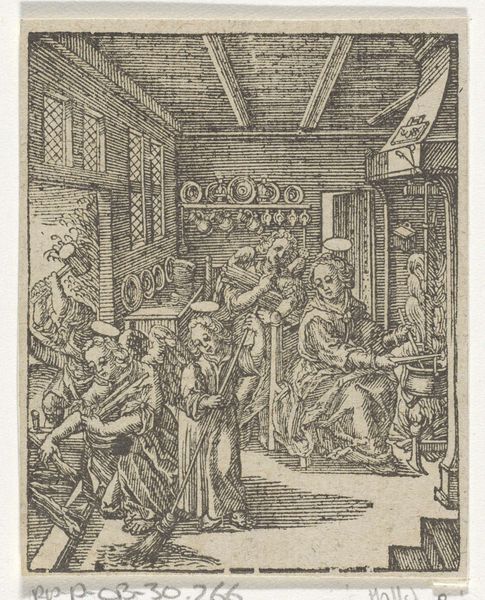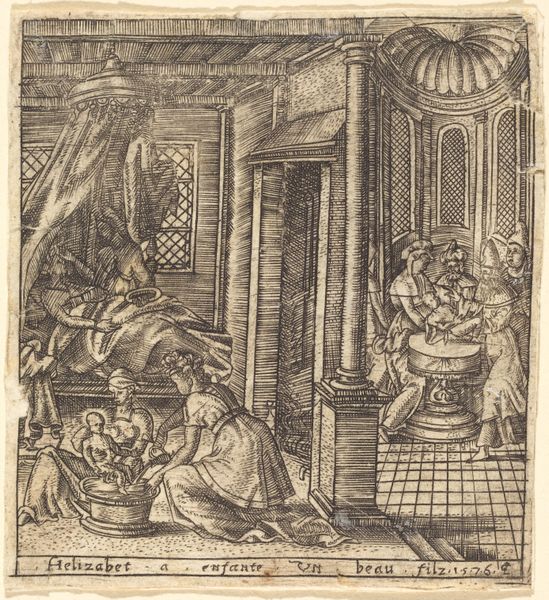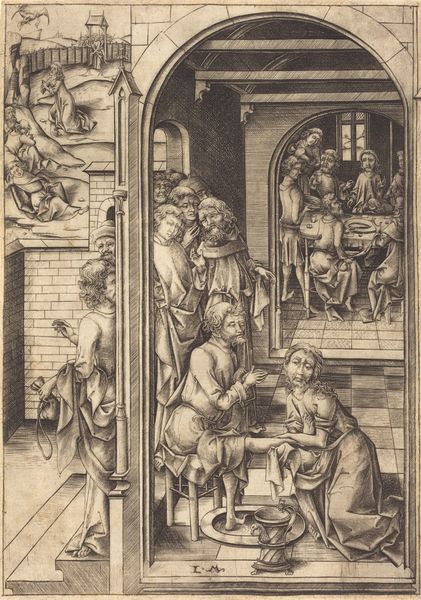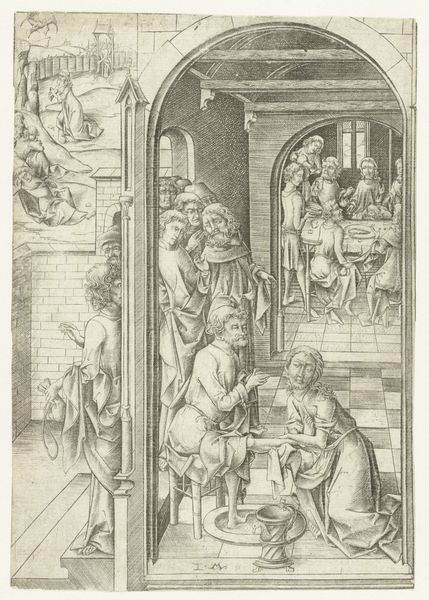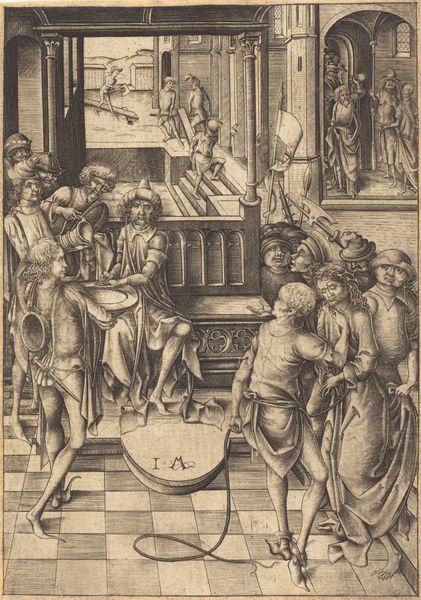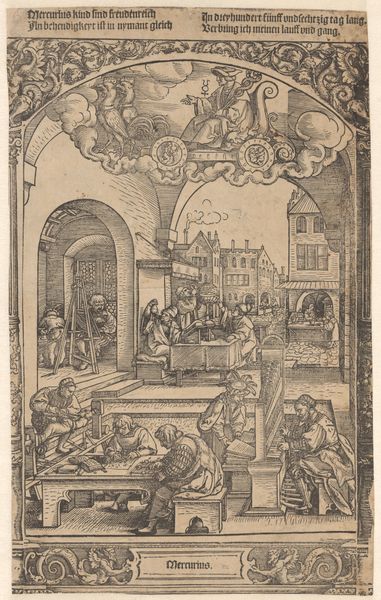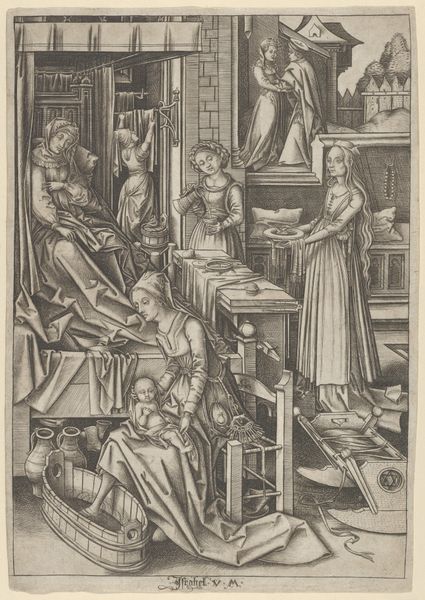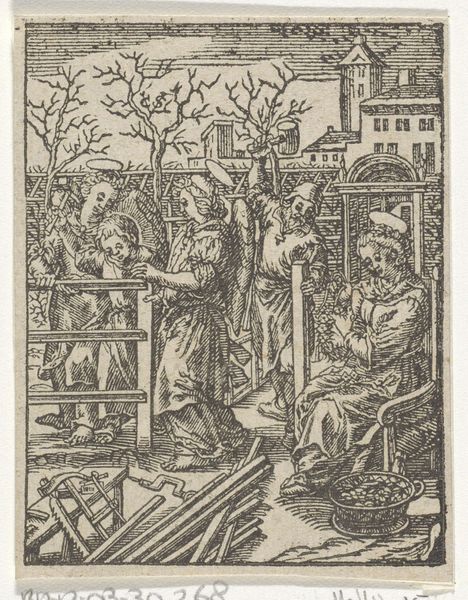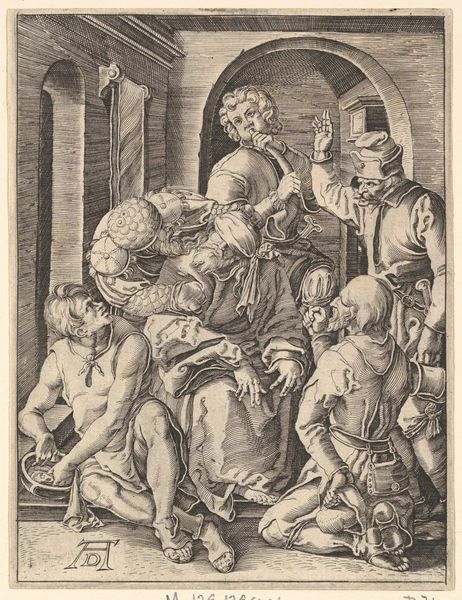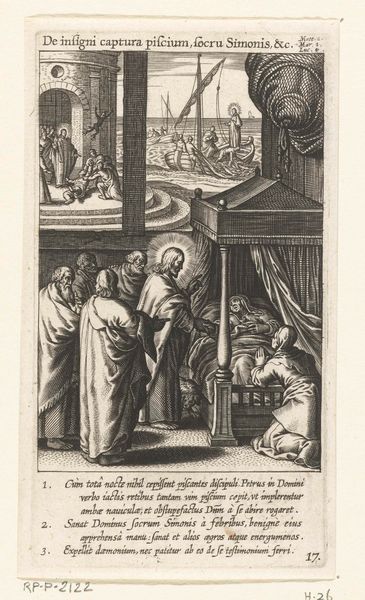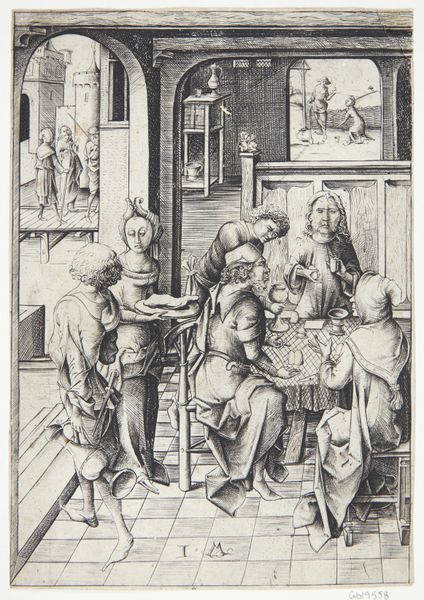
Mary and Joseph Find the Boy Jesus in the Temple with the Doctors c. 1576 - 1580
0:00
0:00
print, engraving
# print
#
figuration
#
line
#
history-painting
#
italian-renaissance
#
engraving
Copyright: National Gallery of Art: CC0 1.0
Curator: This print, attributed to Léonard Gaultier, dating back to circa 1576-1580, is entitled "Mary and Joseph Find the Boy Jesus in the Temple with the Doctors." It's an engraving that captures a pivotal moment from the Gospels. Editor: My initial reaction is one of incredible detail, yet the mood feels oddly detached. The density of the lines creates this busy atmosphere, almost chaotic. The architecture feels grand, yet the figures within seem almost flattened by the sheer number of them and the linework that renders their forms. Curator: The scene depicted is rich in art historical significance, commonly interpreted within the narrative of the Holy Family. Gaultier chose to represent that precise moment when Mary and Joseph find Jesus, not lost as such but deep in conversation, amazing the elders with his profound understanding. This exemplifies not just piety, but the socio-political investment in religious teaching during the Italian Renaissance. Editor: And yet, look at how Jesus is positioned: not as the central figure, but almost engulfed within the crowd of learned men, seemingly emphasizing the anxieties surrounding knowledge and religious authority. The print invites us to question not just the event, but the structures of power within that historical context. Curator: The architecture in the print reflects the classicizing trend that permeated religious iconography. It visually asserts the Church’s claim as the locus of learning and enlightenment, grounding the narrative in a structure that symbolized intellectual power and social order. Editor: Exactly, the deliberate placement of the characters—especially Mary and Joseph slightly apart—visually communicates the parental authority challenging religious institution at that time. It subtly highlights that tension between personal faith, the role of family, and institutional power. The inscription at the bottom also contextualizes this print. Curator: Indeed. This image serves as a powerful document of the visual rhetoric employed by the Catholic Church in early modern Europe. The emphasis on linear precision was typical for didactic print production. Editor: So it becomes more than just an image: it's a statement about knowledge, authority, and the family, captured at a fascinating intersection of history and belief. Curator: Yes. It serves as a potent reminder of how faith and institutional control co-existed in shaping the early modern world. Editor: And, further, the need to question, interpret, and renegotiate those powers and our place within.
Comments
No comments
Be the first to comment and join the conversation on the ultimate creative platform.
